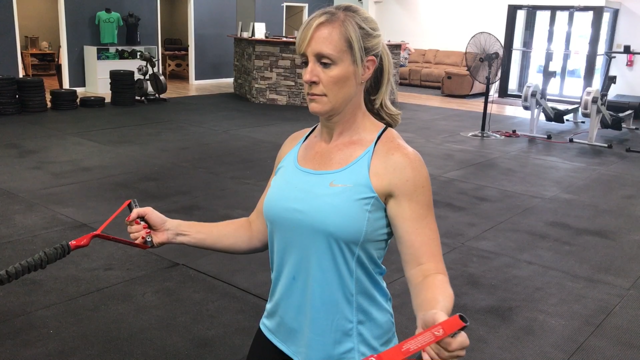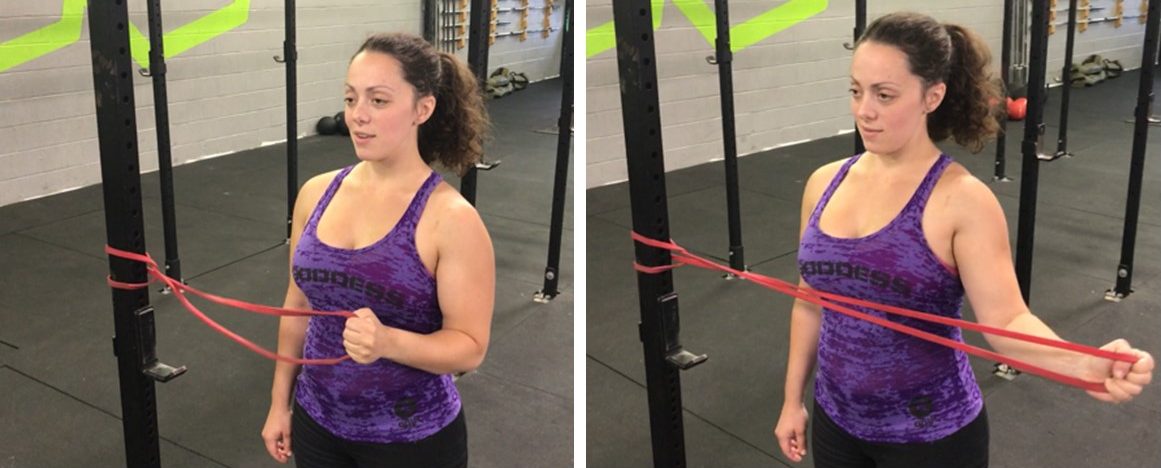Exercises for Shoulder Pain: Prevention and Treatment
A painful shoulder can be very disabling. The good news is that shoulder pain is usually preventable and easily treated. Dr. Larson is a shoulder specialist and has fixed thousands of them in the operating room. But he’d rather have you healthy and living pain-free with the proper preventive care of your shoulder. That’s why we are bringing you these simple exercises for shoulder pain prevention and treatment!
Why Does My Shoulder Hurt?
The rotator cuff is a series of four muscles that encircle the shoulder. These muscles provide the fine-tuning mechanism for all shoulder movement. They are commonly the cause of shoulder pain in athletes, especially as we approach middle age. A rotator cuff tear is a serious injury that often requires surgical treatment. However, if your shoulder pain started gradually, rotator cuff tendinitis is more likely the culprit!
If the rotator cuff is irritated, your shoulder pain can spiral downhill fairly quickly. When in pain, your rotator cuff tends to want to check out and doesn’t do its job during activity. This causes poor movement mechanics and increased stress on the cuff. Which causes the rotator cuff to shut down even further. And so on and so forth until the pain can become awful; like seriously unbearable. We’ve seen people with broken bones that have hurt less than rotator cuff tendinitis in some cases!
Shoulder Pain Treatment
We’ve covered this in other posts on our site as well. One of the best ways to treat shoulder pain is with light exercise and careful stretching. Anti-inflammatories can be helpful also. You can use standard over-the-counter medications like ibuprofen can be helpful. But if you can’t take that, many of the anti-inflammatory supplements listed here can also decrease shoulder pain after an injury.
Combining anti-inflammatories with therapeutic exercises can be more helpful than either alone. Formal physical therapy or injections by your physician can help in persistent cases. Sometimes surgery is done to remove any spurs or curvature to the bone above the cuff. But the following exercises can train your shoulder to move better, avoiding damage instead of doing it surgically.
Stretching Exercises for Shoulder Pain
Stiff shoulders are painful shoulders. If you do not have a full range of motion, overhead movements like snatches, military press, and pull-ups cause chronic micro-damage to the rotator cuff. So keeping your shoulder stretched and mobile can help prevent repetitive injury to the shoulder. But these stretching exercises are also great to help recover from shoulder injuries in addition to helping prevent them.
Child’s Pose:
- Start on your hands and knees, with the hands on the ground slightly forward of your head.
- Lean back into the heals. Keep your arms straight as you sit back. You DON’T need to sit your buttocks on your heels.
- Avoid the tendency to hunch and flex your back. It is better to lean forward into the stretch and feel it press your mid-spine into full extension.
- Hold the stretch for 30-60 seconds.
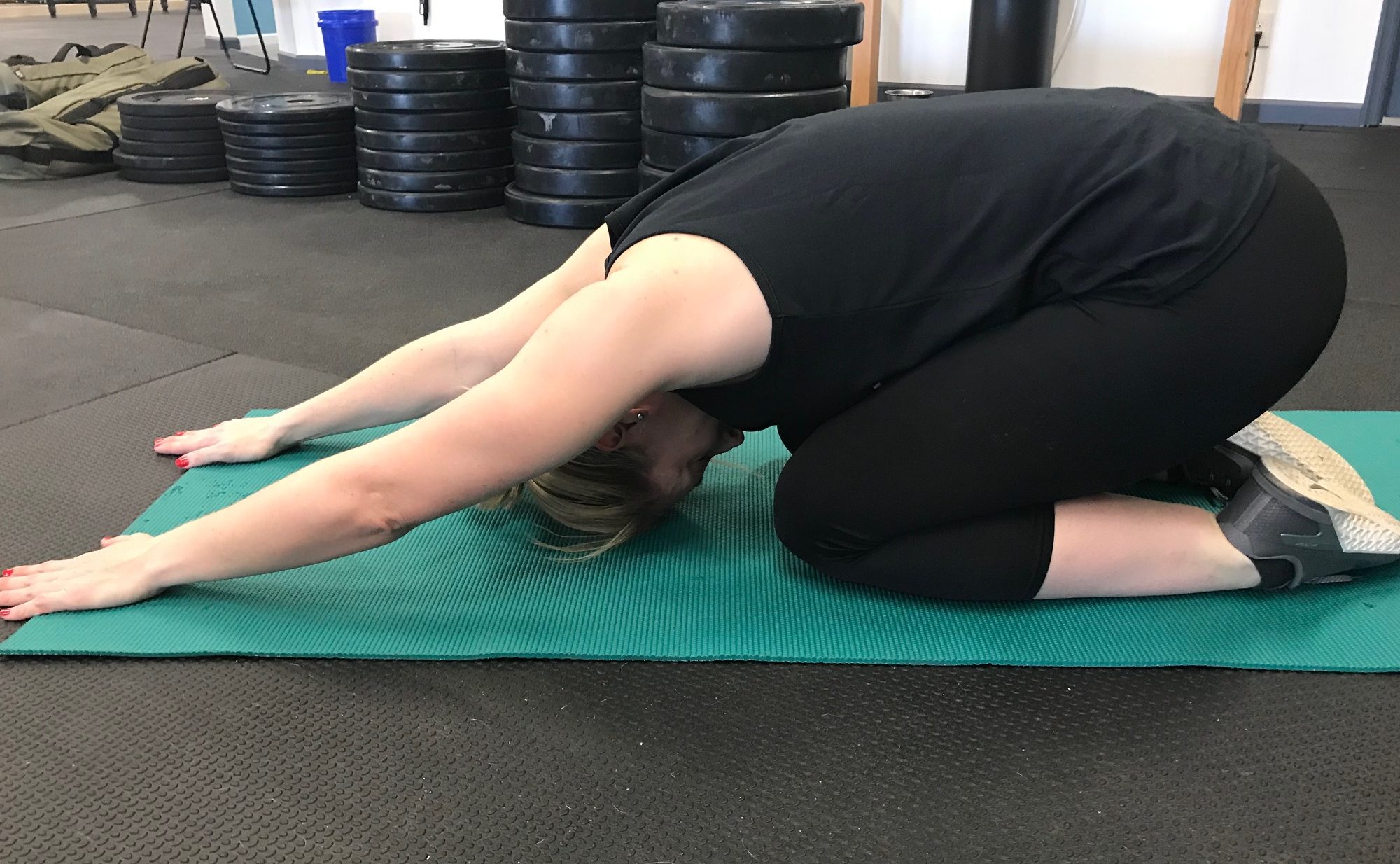
Land Shark:
- No, unfortunately, this does not involve a delicious beer best enjoyed on the beach.
- The best way to start is by performing the Child’s Pose stretch.
- From there, fold your elbows back until your hands meet behind your neck. This forms the “fin” that gives this stretch its name.
- This will shift the stretch to the triceps and all the way into the armpit area. This stretches the muscles that limit scapular motion the most.
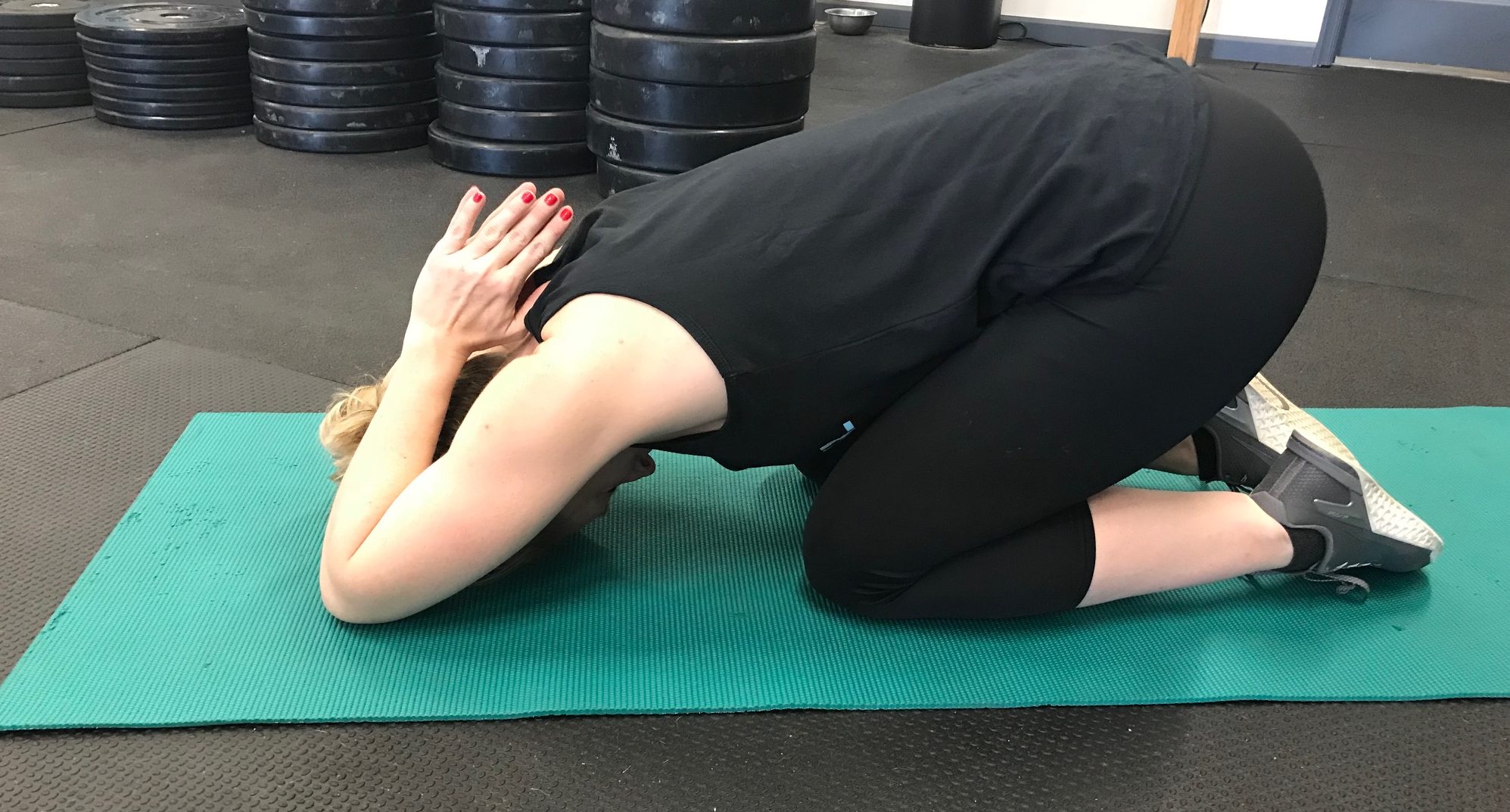
Bench Stretch:
- Set up is similar to the Child’s Pose but you begin with your hands on a standard gym bench.
- Once again, sit back toward your heels until you feel a solid stretch around the shoulders.
- This variation will produce more leverage on the mid-spine. This will help achieve better thoracic mobility.
- Good thoracic mobility will not only protect your shoulders but your lumbar area as well.

Sleeper Stretches:
- The Sleeper Stretch is used by every Major League ball team to prevent shoulder injuries in their pitching staff.
- Start the stretch by laying on your side. Your arm should be straight in front of your, and your elbow bent to a right angle.
- Hold your wrist with the other hand, and then use it to push the wrist down toward the ground as seen in the second picture.
- You’ll be amazed by how tight you are in this direction. That’s why Kristen is smiling with surprise in these images!
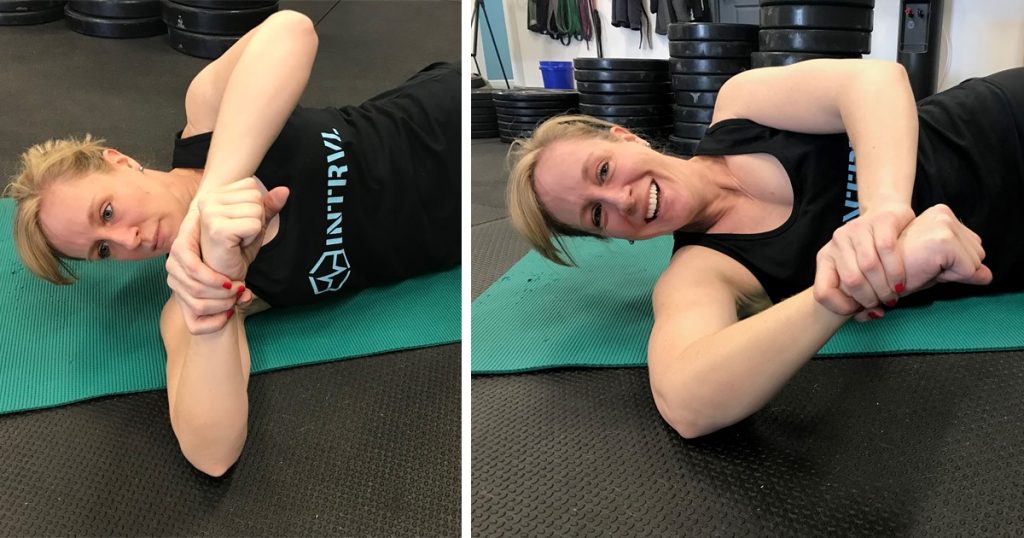
Functional Internal Rotation Stretch
Sleeper stretches are great at gaining internal rotation, but sometimes we need help stretching in functional planes. Like reaching behind the back.
- Roll up a towel or t-shirt to assist this stretch. You can do this stretch sitting or standing.
- Raise one arm up and drop the t-shirt behind your back.
- Then reach behind your back with the arm you want to stretch and grab onto the shirt or towel.
- Use the top arm to gently raise the stretching hand up your back (like you’re trying to scratch).
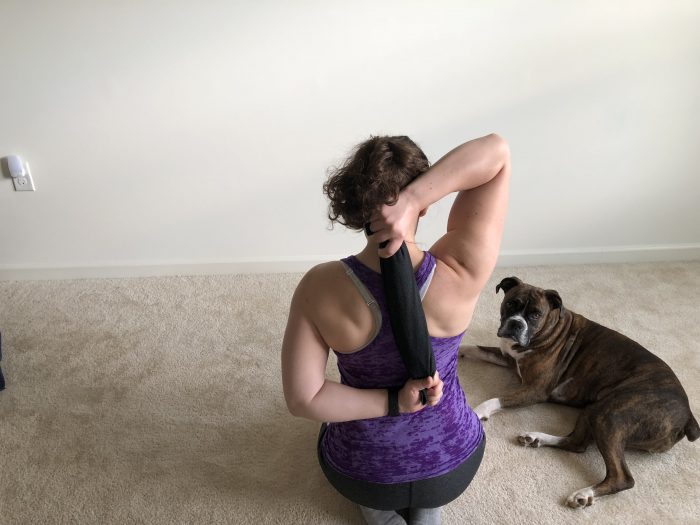
Strengthening Exercises for Shoulder Pain
Like I said at the beginning of the post: when the rotator cuff muscles get injured or just a bit peeved off, they have a tendency to shut down. Which leads to more and more pain. But how do you get these muscles to turn back on?
As a fine-tuning muscle, the rotator cuff is not designed to lift heavy weight. The rotator cuff helps to initiate movement of the shoulder, making sure the ball is well-centered in the socket during movement. To target these muscles, we have to focus on light-weight exercises, that often involve rotation or resisting rotation. Since these exercises are light, it’s best to perform these in high rep sets, such as 3 sets of 15-20 reps.
Banded External Rotation
- Remember, keep these light. Take a light resistance band and secure it to the rig at chest level.
- Grab the free end of the band like a handle and take a step or two away from the rig, keeping tension on the band.
- Rotate your hand away from your body, keeping your elbow bent and by your side. If you find yourself straightening your elbow as you turn, try using a rolled up towel as a self-cue. Pin the rolled up towel between your elbow and your side. Don’t let it drop!
- Doing these with a focus on the eccentric component is one of the most effective shoulder exercises you can do for your cuff. The eccentric part is holding the band at max tension and then slowly releasing it to starting position.
Banded Internal Rotation
- Start this just like you would do the External Rotation exercise above. In fact, if you were just doing those, pass the band to the other hand and take a couple steps away from the point of attachment to put some tension on the band.
- Rotate your arm across your body, into the belly. You should have to keep a towel under your arm during this one.
- You do have to remember to keep your shoulder blades pinched together and squeeze them downward. This prevents impingement and will maximize the benefits of the exercise.
- Make sure you have the band secured tightly to the rig or door frame. You don’t want to end up in the unfortunate situation that one of our elected representatives did.
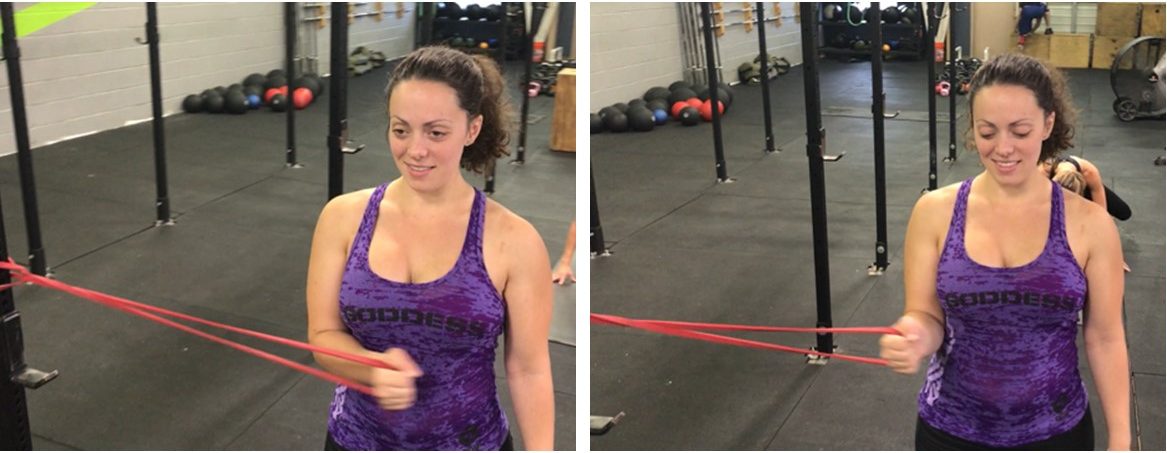
Banded Scapular Retraction
Speaking of keeping your shoulder blades retracted! Many of us sit at a desk typing at a computer all day. This has a tendency to make us roll our shoulders forward, causing the shoulder blades to wing out. This easy exercise combats this and help promote healthy movement patterns.
- Start with a light band secured to the rig. Arms should be straight in front of you.
- Take a few steps back until there is some tension on the band.
- Then squeeze your shoulder blades together and pull your elbows in, arms close to your sides, until your hands are just in front of your ribcage.
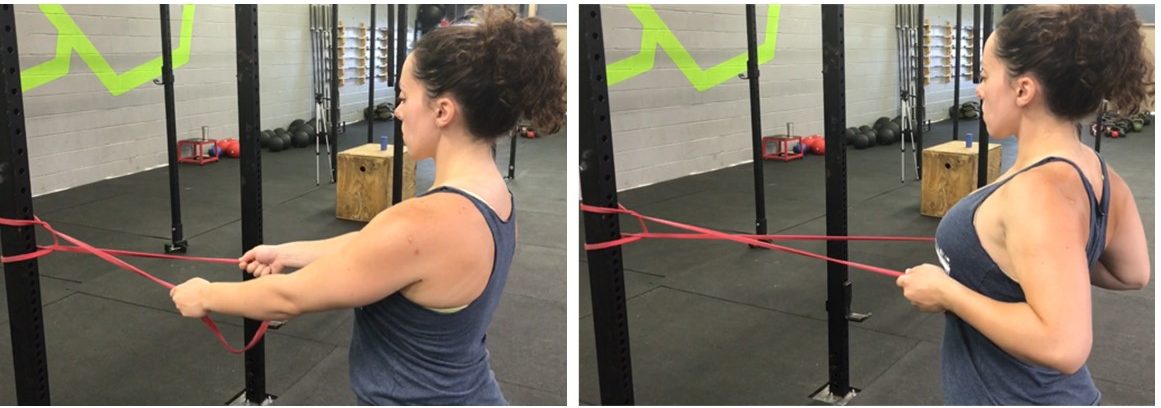
Advanced Exercises for Shoulder Pain Prevention
These next set of exercises are great to use as warm-ups to prevent shoulder pain, but they also serve as more advanced rehab exercises once you’ve graduated from the rotational strengthening above.
Single-Arm Kneeling Press
- For this exercise, find the Goldilocks of dumbbells – one that’s not too light, but that you’re not approaching failure after rep 8.
- Place the dumbbell in a front rack position and kneel with the same leg in front.
- Press directly overhead. Your arm should be in line with your ear in the finish position.
- 3-4 sets of 8-12 reps works best for this exercise!
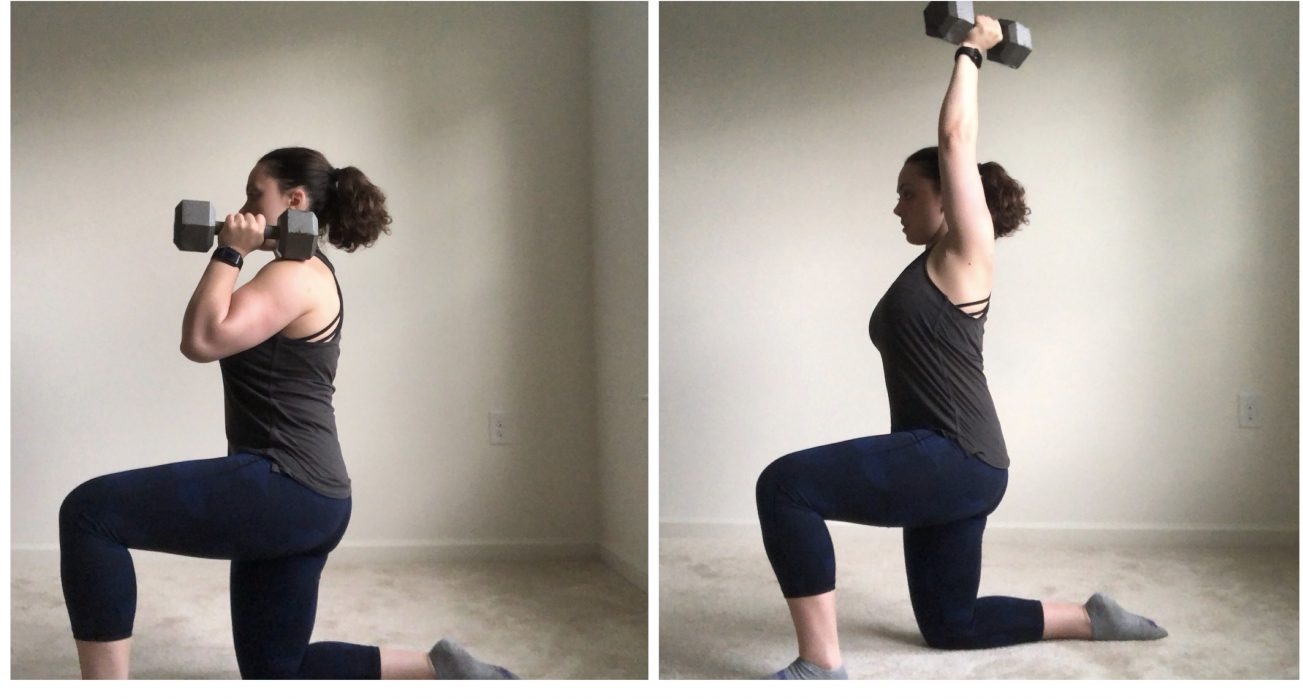
Reverse Snow Angels
Raise your hand if you grew up where the air hurts your face and it regularly dumps 8-10 inches of snow on you on any given day! Michigan…I’m looking in your direction! Did you have to walk to school uphill… both ways… in three feet of snow… since school was never canceled! Now we’ll take an evil twist on one of the only simple pleasures you had from October 31st until March … I mean April 21st. And occasionally into May. Let me introduce you to the Reverse Snow Angel:
- Start on your stomach, nose kissing the floor.
- Keep your arms at you side, palms down.
- Squeeze your shoulder blades tight until your hands are about and inch off the ground.
- Then, like you’re making the wings of a snow angel, bring your arms up over your head. Palms should face the ground the whole time.
- Then, without letting them rest, bring your arms back down to your sides.
- Repeat this for 3 sets of 15-20 repetitions. If an unweighted set is easy for you, try hanging on to 1-2.5kg change plates or 2-5lb dumbbells. I promise this gets heavy fast.
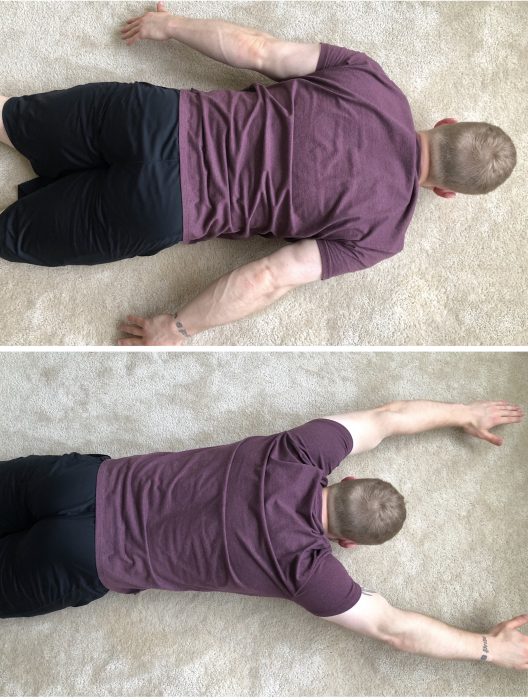
Banded Overhead Mobilization
This stretch can help open your lats and triceps, improving overhead motion and your front rack position.
- Start with a medium to heavy resistance band, secured at a low point on the rig.
- Face the rig, and grab the band. Then turn your body in the opposite direction of the right, allowing elbow to bend and arm to come up by your ear.
- To increase the stretch, step on leg forward and lean away from the rig.
- Make sure to tuck your ribs down, which helps keep your spine neutral. This way you’re actually stretching at the shoulder rather than extending through your lower back.
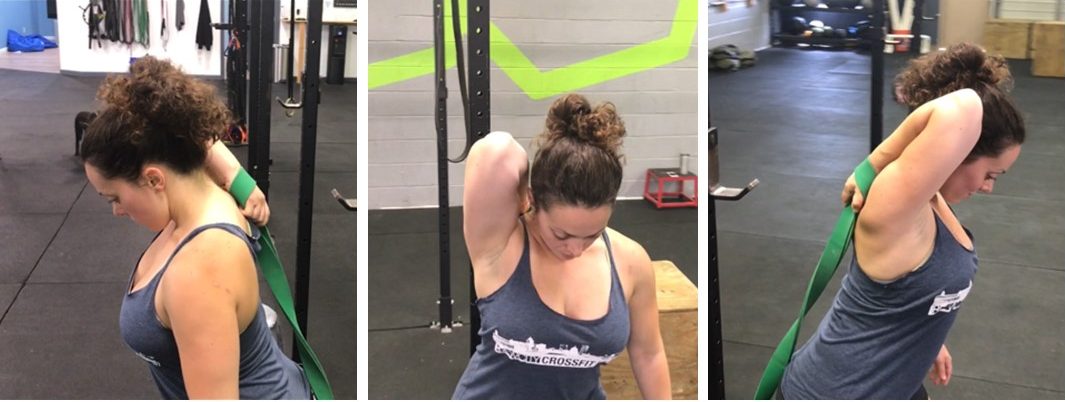
When Should I See a Doctor for My Shoulder Pain?
When in doubt, it never hurts to check with your local sports medicine physician or physical therapist to get the all-clear for these exercises. But, in general, it’s time to make an appointment if you’ve had 6 weeks of pain that’s persistent despite taking time off from painful exercises, ice, anti-inflammatories, and these easy home exercises. Also, if you have a sudden injury and experience severe pain and a drastic decrease in strength, make that appointment sooner than later to rule out a more serious injury than simple tendinitis. Even if the diagnosis is tendinitis alone, sometimes shoulders need hands-on treatment by a therapist to decrease muscular tension, retrain poor movement patterns, and fully resolve your shoulder pain!

